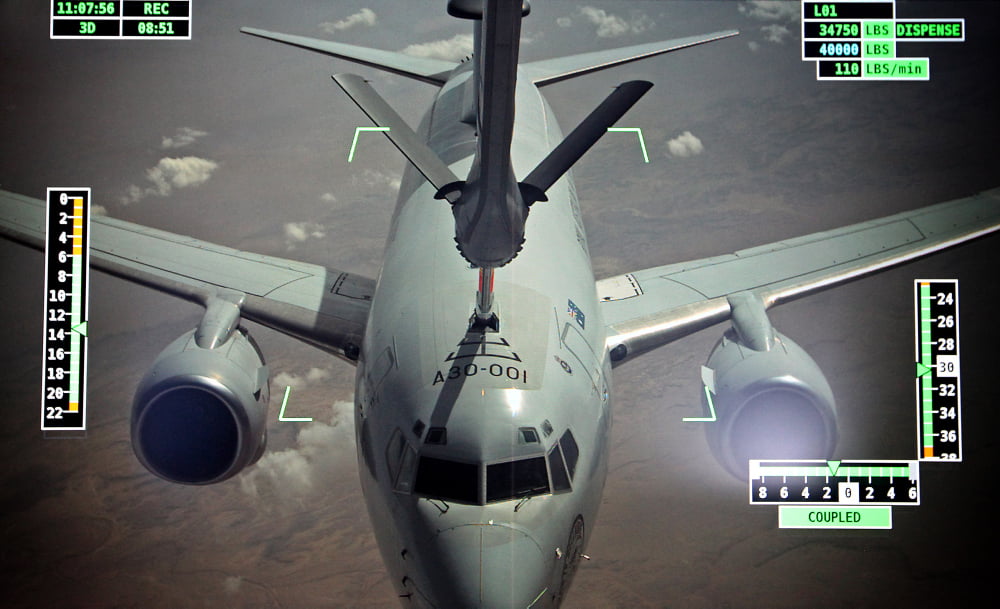2016-04-11 By Robbin Laird
During my visit to Australia in March 2016, I was able to follow up earlier discussions with 2nd Squadron with the new head of 42nd Wing to focus upon Wedgetail, its role in the integrated task force in the Middle East, and evolving the capability as the RAAF reached out beyond its air-to-air battle management role to expand the aperture to encompass needs in the maritime and land domains.
The RAAF through its Plan Jericho approach is expanding its thinking and approach to operations to shape a 21st century multi-domain role.
Although connectivity is a central tissue of the effort, the Jericho approach should not be reduced to the question of enhanced connectivity.
It is about operations, and the training for operations to shape an ADF more capable of engaging with a force which is modular and can be tailored to the mission.
This means that the C2 they are after is strategic in the sense of being able to make the right decision about the force package to send to engage the mission, as well as pushing the level of operational decision making down to the right level.
And the challenge is not simply to connect everything with everything to collect loads of data, but in the words of Air Commander Australia, “to get the right information, to the right people and at the right time.”
This is about information parsimony and about an ability to distribute information as appropriate and as needed.
A way to look at the way ahead from the RAAF point of view can be seen in the graphic below, which has been created by Second Line of Defense.

Clearly, the Wedgetail is a key asset in this effort, and has already demonstrated its ability to contribute to the RAAF’s air combat capabilities, by adding battle management to airlifting to strike in an integrated force package.
During the visit to Williamtown on March 6, 2014 to 2nd Squadron, the Squadron Commander highlighted a key aspect of the Wedgetail: it is software upgradeable.
This is a software upgradeable aircraft with a defined launch point (IOC) but no fixed end point (FOC).
The system will always be evolving and growing as the software code gets rewritten to reflect events and demands from the squadron.
The squadron works through its experience and shapes change orders which get sent to the procurement authorities to sort out priorities for the next round of upgrading the aircraft.
The difference between older and such a new system was outlined by one participant in the roundtable as follows:
“We have in the same time frame bought a CRC system full up which will look pretty much like it is in 20 years; with Wedgetail it will look nothing like it does now in 20 years.”
The Commander of 42nd Wing is tasked with managing the current fleet of Wedgetails and shaping a way ahead for the capability within the extended and integrated airspace.
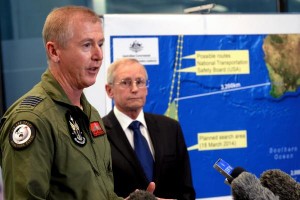
But to do so, requires an overall understanding of the operational evolution of the ADF and its way ahead.
Put in blunt terms, the RAAF because it is small has developed operational leaders who have a much greater diversity of experience than a larger Air Force like the USAF, which means that an AWACs officer can become stovepiped into that experience.
Whereas with the RAAF, Wedgetail experience is part of the broader evolution of the ADF and that will drive the demand side for where the RAAF will want to take its software upgrades.
The new 42nd Wing Commander has a rich and diverse background which he brings to the task.
According to Air Marshal (Retired) Geoff Brown, Group Captain Captain Stuart Bellingham, was a key officer involved in bringing the JTAC experience to the RAAF and bringing a perspective into the RAAF understanding the Army’s needs and approaches to combat, which clearly is important in shaping a way ahead for a more integrated force approach.
The Group Captain indicated that the core thing, which he focused on initially, was “joint fires and forward air control, and JTAC experiences. This got me heavily involved with the special forces and the ground forces, more generally.”
This is not really what you would hear from the typical AWACs commander in the USAF.
He then went to Iraq and was involved as an air liaison officer for the second Gulf War, 2003.
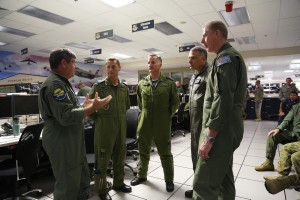
He then was involved with the Wedgetail but when the program hit substantial difficulties, he transitioned out and did another “three years in joint fires as the joint fires integration director.”
He then became Commanding Officer of 4 Squadron which put him at the heart of further evolving his command knowledge of the joint fires domain.
According to the RAAF, No. 4 Squadron is to be understood as follows:
Number 4 Squadron supports a diverse range of Australia Defence Force (ADF) capabilities and operations on a domestic and international front.
To achieve this effectively, 4 Squadron consists of three flights, as well as maintenance / logistics sections and a small administrative team.
The three flights are broken down into A Flight which comprises of aircrew responsible for operating the Pilatus PC9/A Forward Air Control (FAC) variant aircraft. B-Flight personnel employed as Combat Controllers integrate and control the elements of air and space power to enable precision strike and advanced military force operations. C-Flight members train students undertaking ADF Joint Terminal Attack Controller (JTAC) course as well as facilitating the continual development and assessment of current ADF JTAC qualified personnel.
4 Squadron supports ADF and multinational operations and exercises. Combat Controller Teams (CCTs) are regularly tasked to support operations throughout the world.
Aside from the training ADF JTACs, the unit also directly supports No. 2 Operational Conversion Unit (2OCU) twice a year, 76 SQN through Close Air Support (CAS) during Initial Fighter Course and all ACG frontline fighter Squadron CAS training with the provision of CCT and FAC/A
Combat Controllers from B FLT 4 are currently deployed on a rotational basis in the Middle East.
4 Squadron regularly deploys aircraft and personnel in support of Air Force and Army operations, including:
- Pitch Black
- High Sierra
- Southern Frontier (US Marine Corps support)
- Travelling Boomerang
- Black Dagger
- Faru Sumu
- Red Flag
- Sharp Dagger
During these exercises, PC9/A (F) aircraft fly FAC/A and CAS profiles, with CCT providing Terminal Control and battlefield airspace management. 4 SQN pilots utilise smoke grenades as weapons to represent high explosive ordnance used by fast jet aircraft.
This enhances the training realism and complexity for Joint Terminal Attack Controllers (JTAC).
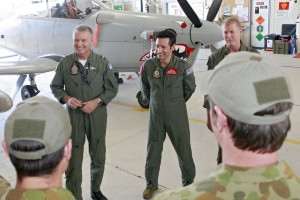
Smoke grenades are also used to assist pilots of fast jet aircraft visually acquire ground targets. Releasing smoke grenades in the vicinity of a target provides strike aircraft with an easily identifiable visual feature, assisting them to positively identify their target.
This enhances their ability to employ weapons accurately and efficiently and is a key element of Forward Air Control.
These procedures provide training not only for the ground personnel and the strike aircraft’s crews, but also for the 4 Squadron aircrew practising in the CAS and FAC/A role.
Local 4 Squadron operations centred around RAAF Base Williamtown mainly focus on supporting CCTs and JTACs.
Additional operations aim to train and enhance the skills, techniques and qualifications of the Pilots within 4 Squadron.
So what did Group Captain Bellingham do next?
Naturally, he went to another command position where he dealt with among other things missing Malaysia Airlines aircraft somewhere over the Pacific.
He became the Director of the RAAF Air and Space Operations Center, which is part of the Joint Operations Command Headquarters.
And while there, Operation Okra or Operation Inherent Resolve was launched into the Middle East.
And that operation would become the next focal point for Bellingham as he would become the third commander of the air task force and do so in the last part of 2015.
He discussed his experience and that of the task force in a presentation to the Air Power Conference.
One of his slides was a good prelude to his next command.
“I remember one conversation in particular with my Senior INTELLO, during which he remarked upon the fact that no scriptwriter could have dreamed up the level of complexity and daily ‘excitement’ in which we found ourselves.”
He has come back to take command of 42nd Wing.
“I came back to Wedgetail after it had progressed from in your words “a troubled to a trailblazing program” and after having seen it perform in Iraq. I went for a fly a couple of times over Iraq in the E7 and what a phenomenal capability it is.
And we’re just come back from Red Flag where we sent the E-7 and crew across to Red Flag Nellis there in January.”
Question: What reactions did you have from the US and the partners to the new capabilities your brought to the operation in the Middle East?
Answer: The coalition partners bring different capabilities to the fight.
Obviously, the USAF is a key player.
When you walk into the CAOC there are 18 nations represented in the operation.
Around the table we discuss what we bring to the coalition.
The approach is based on mutual respect and making sure that we work effectively together in operations.
We’re a pretty small force, but I think we’ve done a reasonable job in supporting the coalition.
Question: That being said, what about your unique capabilities?
Answer: Wedgetail is highly valued and highly regarded within the coalition.
It is a combination of what the weapon system brings to the fight and how the crews use that weapons system and drive forward innovation.
With regard to the technology, it has a powerful combination of tools, the radar and electronic surveillance capabilities.
With regard to the training of the crews, which is evolving, we are focused on our ability to use the weapon system in a complex combat environment.
And exercises like Red Flag are important to the evolution of our training and our evolving combat approach.

We like to think of ourselves as coming to the fight with something different, but complimentary and fusing straight in to support the coalition.
Question: Your background is a core asset as well for the evolution of the Wedgetail as the RAAF leadership looks to evolve the aircraft along with the evolution of the Navy and the Army.
Indeed, the goal in some ways is to co-evolve the software onboard the Wedgetail with those on core Naval and Army systems, notably as new capabilities get added to the force.
How do you see the way ahead?
Answer: It is about co-evolution.
We are looking at battle management across the air, sea and land spectrums.
We are looking to expand our reach beyond the purely air battle management role into a joint role.
For example, the coming of the new amphibious ships provides a wonderful opportunity to support Army and Navy at the same time.
We are looking to work closely with them on the amphibs and later this year look to exercise with them to shape a joint approach.
As the air warfare destroyers enter the force we will be working hand and glove with them in blue water operations to support their effects equally.
It is a two-way street.
We are looking to support them; and we are looking for them to support the combined operations in the air-sea battlespace.
It’s a really good environment to be in, in the joint space right now with the capabilities that each of us are bringing and shaping how we’re going to work together.
Question: How are thinking about working with the amphibious ships?
Answer: We will provide surveillance for the amphibious force and through the process of inserting and supporting force on the ground.
Obviously the role will vary with regard to whether it is a contested environment or not, but will provide electronic support and coordinate the various are and surface assets in the area.
Our role will be to fuse everyone together and then plugging that into our ampbhious task group, which may or may not have a destroyer with them.
We will bring the whole team together and make sure that everyone as the highest possible situational awareness within the operational space.
For earlier pieces on the Wedgetail, see the following:
https://sldinfo.com/raaf-e-7a-wedgetail-longest-combat-flight-to-date/
https://sldinfo.com/the-wedgetail-as-a-trailblazing-program/
https://sldinfo.com/e-7a-wedgetails-contribution-to-op-okra/
https://sldinfo.com/the-kc-30a-and-wedgetail-the-raaf-shapes-a-way-ahead/
https://sldinfo.com/wedgetail-aircraft-achieves-final-operational-capability/
https://sldinfo.com/the-wedgetail-in-iraq-performing-high-endurance-airborne-c2/
https://sldinfo.com/e-7a-wedgetail-operating-over-iraq/
https://sldinfo.com/visiting-the-wedgetail-squadron-at-williamtown-raaf-base-australia/
https://sldinfo.com/the-aussie-wedgetail-and-air-battle-management-in-red-flag-2014/
With regard to Wedgetail in the recent Red Flag exercise, an article by Jaryd Stock, highlights comments made by the RAAF while at Nellis.
Since its very first deployment a few years ago, controlling aircraft in the search for missing Malaysian Airlines 777-200 flight number MH370, the RAAF’s E-7A Wedgetail, based at RAAFB Williamtown, is proving to be one of the most adept and quintessential Airborne Electronic Warning & Control (AEW&C) aircraft systems ever developed.
The work carried out by its crews from 2SQN is getting all the praise they deserve not only from Commanders from within the RAAF such as GRCAPT Gordon, but also U.S. commanders and allied partners in the Middle East Area of Operations (MEAO), where the SQN has a detachment with one aircraft operating in the war against ISIS in Iraq and Syria.
APD had the privilege to interview detachment commander for Red Flag 16-1, Squadron Leader (SQNLDR) Glenn Salmon about the Wedgetail’s and, in turn, 2SQN’s roles and their deployment from Williamtown for 16-1.
“We deployed 35 personnel out of the 410 that have deployed to Nellis AFB with that we have maintenance staff, mission support, operations staff, intelligence and aircrew.
And these exercises benefit all of us deployed to this exercise, one of 2SQNs objectives on Red Flag is to strengthen our ties and reputation with our U.S. and UK allies – many of whom we have worked directly with on Operation Okra in the MEAO and many of whom we will end up working with whilst deployed in the future.
The exercise provides us the opportunity to display the world class level of command and control that we are becoming known for in the Middle East as well as highlighting our capabilities to coalition aircrew and leadership who may not have had the opportunity to work with us yet. We take great pride of the work we have conducted already and that is great for our reputation and we all feel it is well deserved”.
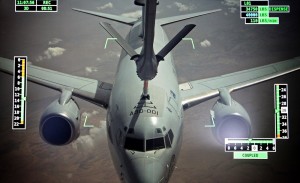
The importance of becoming a fully integrated team is second to none for the command and control units and the interoperability or knowledge and trust gained is never taken for granted. Even though there is a leap in capabilities the E-7 offers compared to the E-3 Sentry, surprisingly not all is that different between the crews and aircraft as both are working on providing as much experience for the crews from their respective units for real time missions.
SQNLDR Salmon states, “Whilst the E-3 and E-7 are generations apart in their technology, we still speak the same language and are working together to provide a common goal – that of battle-space management.
The two platform’s differing approaches to the task provide a great opportunity for us to see how somebody else tackles the same problem and in doing so, refine and validate our own procedures.”
He goes on, “Exercise Red Flag provides the most realistic simulation of what actual operations such as Operation Okra where we are operating at the moment will involve.
As our contribution in the Middle East continues, we are constantly increasing the number of our aircrew, maintainers and support staff that have operational experience.
Our USAF counterparts are in a similar situation. This means that we get an excellent melting pot of senior and junior people from both countries that can share and collaborate on their experiences from both previous exercises and more recently how we all are handling operations in the Middle East.”
SQNLDR Salmon also provides a rare insight into how personnel that serve in the RAAF feel about their own brethren, but also about their country and their fellow Aussies and how they sometimes don’t want to leave their families behind in order to serve but do it for their country and for the Australian public and the public of Australia’s allies!
“I have an immense sense of pride at what 2SQN has achieved over the past 3-4 years. The capability of the aircraft and the people that operate, support and maintain it has grown at an incredible rate. This has been borne out in our experience supporting the huge effort to search for Malaysian Airlines flight MH370 off the west coast of Australia and more recently our 18 month (and counting) presence in the Middle East”.
“The level of service provided by the E7 and the personnel of 2 SQN in support of these operations and our regular activities back home is second to none. I still get a great sense of enjoyment out of flying the aircraft and it is a great privilege to be involved with the unit in this our 100th anniversary year”, he added.
The demands of the job, including significant amounts of time away from home and loved ones, can be difficult for people from time to time. However, the sense of reward, accomplishment, camaraderie and the knowledge that we are making a genuine contribution to operations on behalf of Australia is what makes it all worthwhile”, SQNLDR Salmon noted.
http://aviationphotodigest.com/raaf-red-flag/
The picture of the press conference concerning the missing Malaysian airliner is credited to the following:
http://www.vosizneias.com/news/photos/view/470087295
And the slideshow shows various Wedgetail (in several of the photos ) with the KC-30A in various locations and is credited to the Australian Ministry of Defence.


